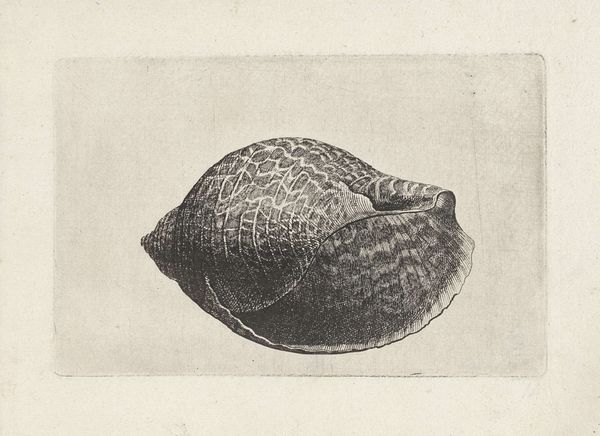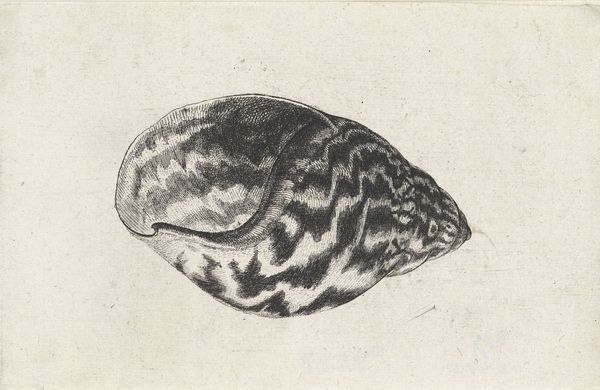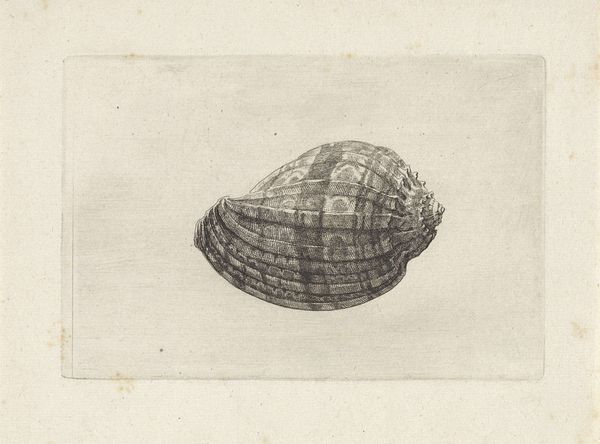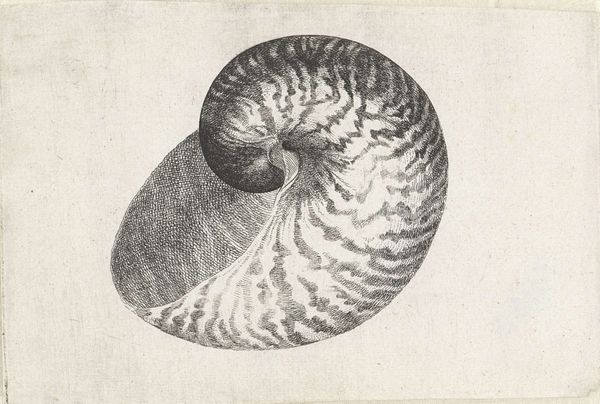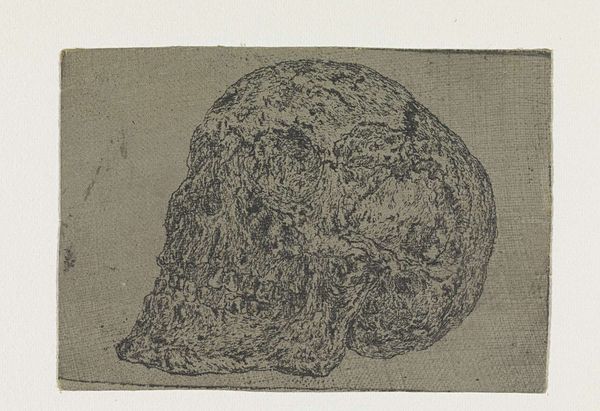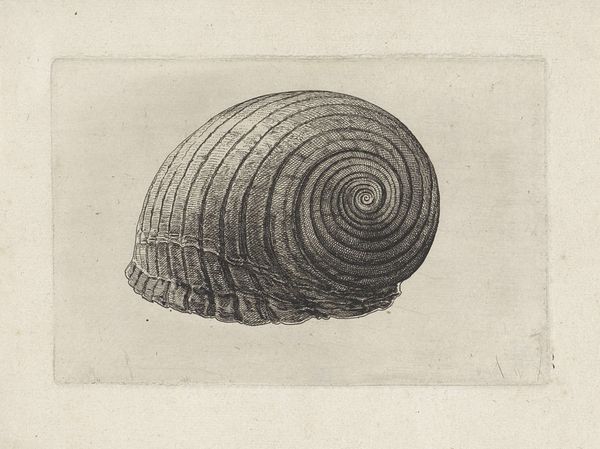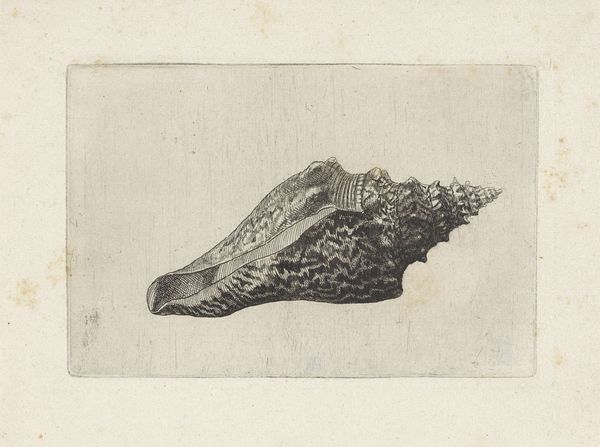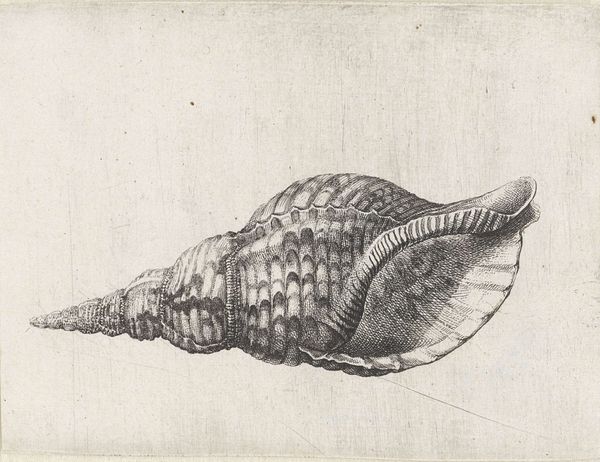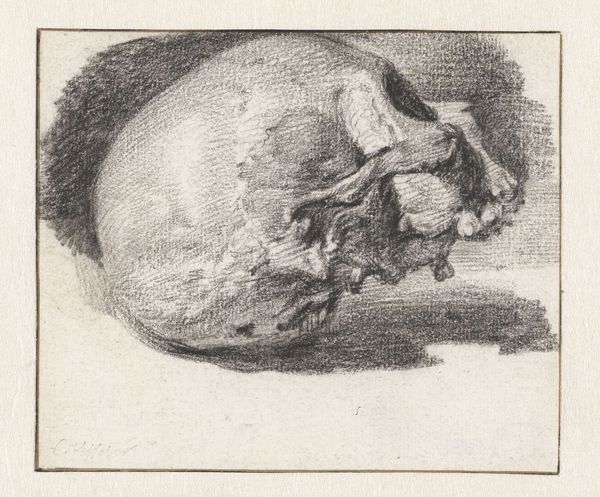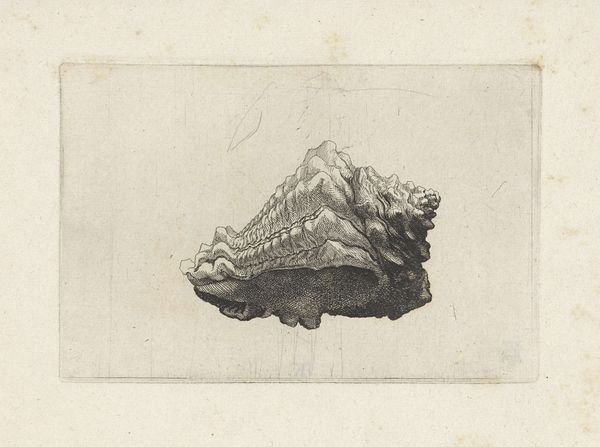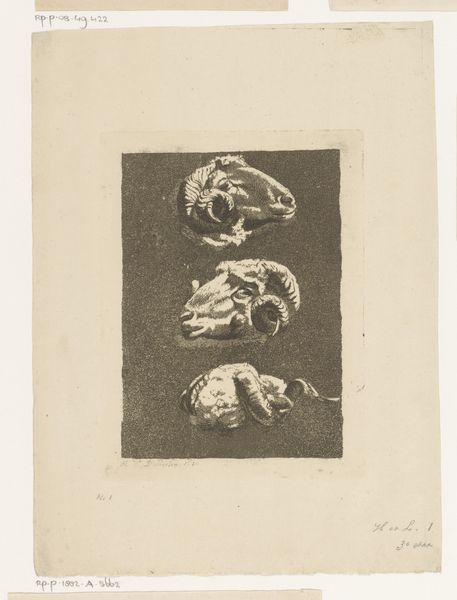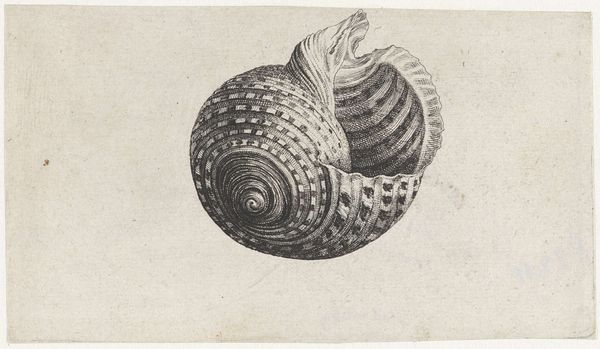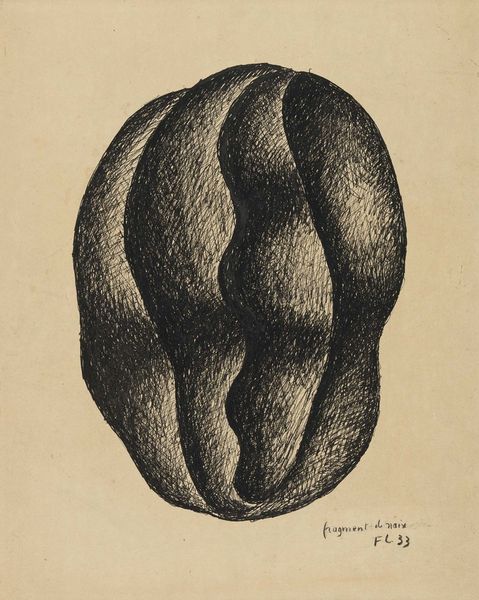
print, etching, engraving
#
baroque
# print
#
etching
#
old engraving style
#
pencil drawing
#
engraving
Dimensions: height 97 mm, width 138 mm
Copyright: Rijks Museum: Open Domain
Editor: Here we have Wenceslaus Hollar's etching, "Schelp, turbo sarmaticus," created sometime between 1644 and 1652. It's a baroque rendering of a seashell... the detail is incredible! What do you see in this piece? Curator: It’s fascinating how Hollar, during the Baroque period, chose such a seemingly humble subject. Considering the 17th century's intense focus on exploration and trade, a simple shell becomes a potent symbol. Editor: How so? Curator: The shell could be seen as a representation of global exchange, brought back by traders. It places value on previously ignored perspectives. Furthermore, consider the shell itself as a symbol of protection and the feminine. Does Hollar subtly address the often-overlooked contributions and vulnerabilities of women in this era of discovery? The intricate details elevate it to more than mere decoration. Editor: So, you are saying it might also be communicating gendered messages and socioeconomic issues? Curator: Precisely! The level of detail also reflects a burgeoning scientific curiosity – almost like a cataloging of the natural world. And think about who could afford these prints, who had access to this type of scientific imaging? It all points to issues of power, class, and access to knowledge during that time. Editor: I never thought a seashell could hold so much meaning! Thanks, that gives me a lot to consider. Curator: Indeed. The beauty of art lies in its ability to mirror the complexities of its time, challenging us to examine power structures and historical contexts.
Comments
No comments
Be the first to comment and join the conversation on the ultimate creative platform.
